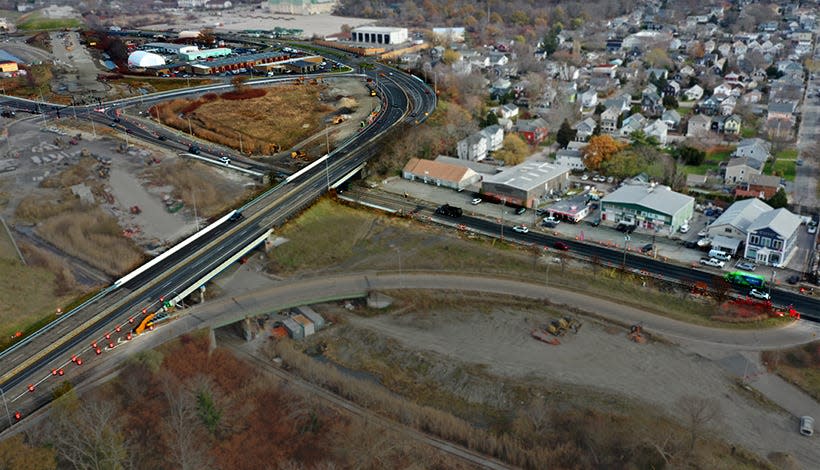Will freed up Pell ramp land in Newport be developable? Why concerns are being raised
NEWPORT – Any hopes that the city could easily develop the land around the new Pell Bridge ramp realignment by itself were dampened on Wednesday as the City Council learned that acquiring the land, whether it is developable or not, would probably require having a bigger entity, like the state, along for the ride.
“I don’t think that the 20 acres and all the potential around it is any less important to the economic future of the State of Rhode Island than downtown Providence,” said Colin Kane, chair of the city’s Ad Hoc Bridge Ramp Realignment Property Advisory Commission. “Newport contributes as much and is as important to the future health of the state and it's a great thing. There are so many positive things that can happen, but we have to get that support and we have to get it as quickly as possible.”
Since November, Kane’s commission has been studying the possibilities available to the city for acquiring and redeveloping the 25 acres of land that will be freed up once the RI Department of Transportation finishes realigning the ramps coming off of the Pell Bridge. The hope was that the city might be able to acquire the land, which is currently owned by RIDOT, and remediate it to redevelop it as envisioned in the North End Urban Plan.

However, the commission soon came across several roadblocks to that goal, the most urgent of which was the difficulty the commission had in determining where the borders of these new parcels would be and what condition the land is in. The commission was also tasked with understanding the process RIDOT has for land acquisition.
In the commission’s first official update to the City Council during its regular Wednesday meeting, Kane said state regulations require RIDOT to sell the property freed up by the project at fair market value. This “fair market value” would have to be determined by third-party appraisers, a process that would only commence after the work on the Pell Bridge Ramp Realignment project “closes out,” sometime around October 2026.
The close-out process not only encompasses the physical conclusion to the construction of the ramps, but also legal proceedings. There were 144 takings, where the government obtained private property for public use, many of which happened in the 1960s, Kane said. By statute, RIDOT has to track these 144 cases down and offer the property to the owners heirs. Some of the land may also be retained by RIDOT for future improvements, for things such as stormwater and utilities.
While Kane said the commission has received a commitment from RIDOT to accelerate the close out process, he suggested that the city take the time in the interim to start assessing the properties, their condition and their potential value. He said the area around the Pell Bridge ramp realignment project looks very wet and struggles with stormwater and flooding problems, which could mean the land is potentially undevelopable.
“If half of it is wetland, then half of it you can’t build on and half of it is unsuitable soils, we shouldn’t pay for it, nor would I suggest we take control of it, because it has no market value and no merit and, quite frankly, is a liability,” Kane said.
Kane’s perspective on this issue is unique in that he helmed a similar commission, the I-195 Redevelopment Commission that was charged with overseeing the land left over after I-195 was relocated in Providence, from 2011 to 2015. That commission, however, was a state-appointed agency, and Kane expressed frustration with the comparative lack of resources and cooperation from other parties.
Traffic troubles: Pell Bridge ramp work delayed to April. What to know.
“When 195 was formed, I had an incredibly cooperative level of support from every single state agency, the City of Providence and every utility provider,” Kane said. “DOT not only welcomed us into their buildings, they organized the meetings for us… They were the lead, quite frankly, in helping us understand what needs to be done for the 195 Commission to take title and then to be prepared to get it developed. It went from completion to shovel-ready very quickly.”
Kane said this is why he believed the commission and the City of Newport cannot redevelop this land alone. He recommended that the city partner with the state of Rhode Island to have the resources needed to complete the project.
“We cannot do it alone,” Kane said. “The redevelopment of the North End cannot be completed by the City of Newport itself. We are too small.”
This article originally appeared on Newport Daily News: Pell Bridge ramp land development in Newport draw concerns

